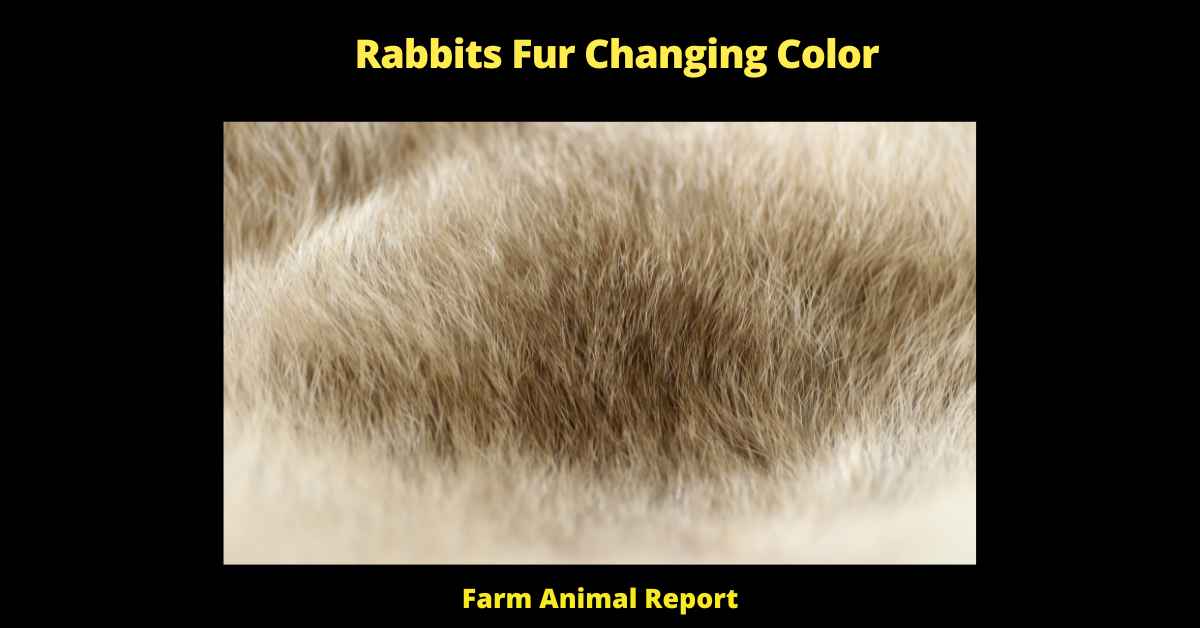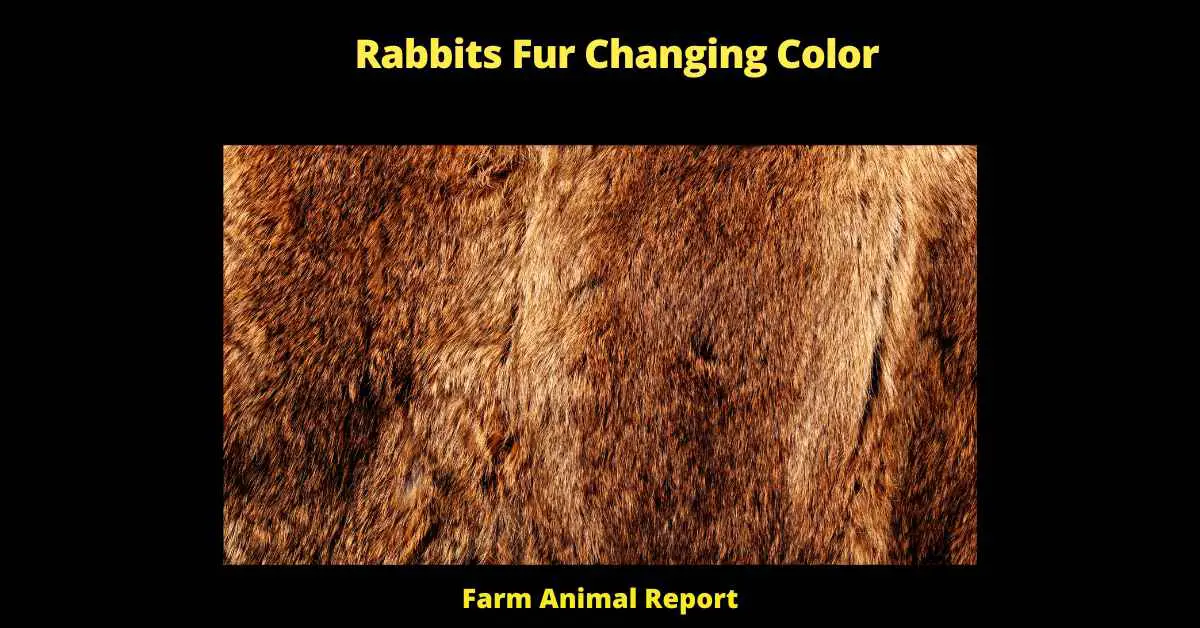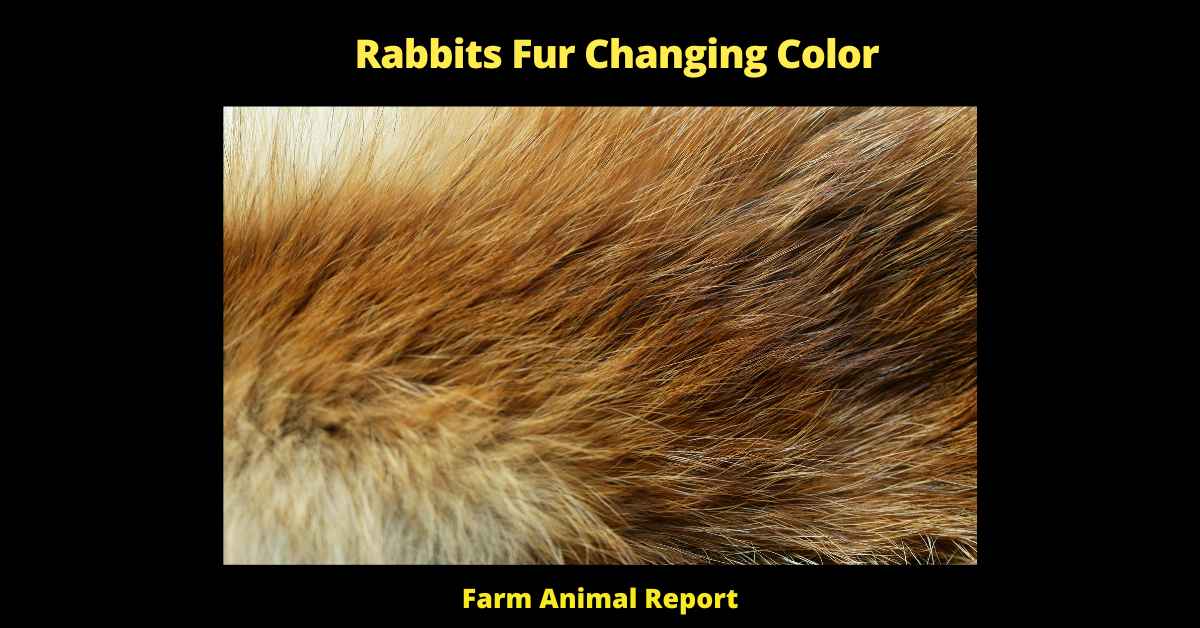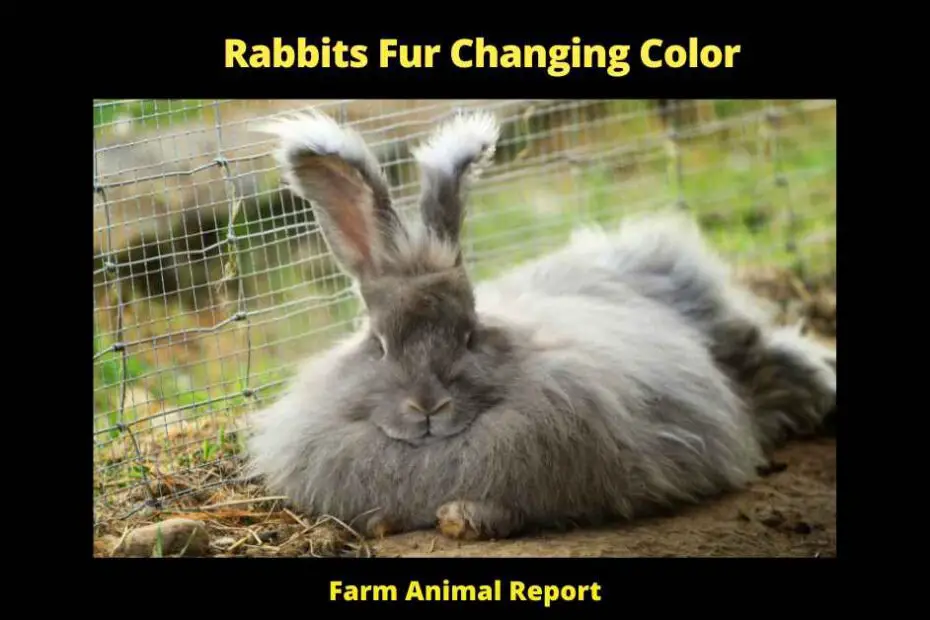Rabbits Fur Changing Color – Color changes are an evolutionary survival mechanism, borne of a rabbit’s status as a prey animal. Rabbits molt several times a year, Steady Molting while growing up. Their fur initially grows and then grows back a different shade, camouflaging them from potential predators.F
Do you know that the color of a rabbit’s fur can change? It’s true! In fact, their fur can change several times during their lifetime. The reason for this is still unknown, but it is an interesting phenomenon nonetheless! In this blog post, we will discuss the different colors a rabbit’s fur can be, and what might cause this change in color. We will also take a look at some famous rabbits whose fur has changed over time. Stay tuned!
Rabbits Fur Changing Color
Molting
Molting is a process that all rabbits go through periods in which they shed their old fur and grow new fur. Molting usually happens twice a year, in the spring and fall. during these times, you may notice patches of your rabbit’s fur falling out or notice that their new fur is a different color than their old fur. This is nothing to be alarmed about and is perfectly normal!
Sun Bleaching
If your rabbit spends time outside in the sun, its fur may become lighter in color due to sun bleaching. This is also perfectly normal and not cause for concern. If you don’t want your rabbit’s fur to change color, simply keep them out of the sun or put them in a shady spot when they’re spending time outdoors.
Changes in Seasons
As the season’s change, so does the color of your rabbit’s fur. In the winter, their fur will be thicker and darker to protect them from the cold weather. In the summer, their fur will be thinner and lighter to help them stay cool. Again, this is perfectly normal behavior and nothing to worry about!
Diet
Finally, diet can also affect a rabbit’s fur color. If your rabbit isn’t getting enough of certain nutrients in its diet, it can cause its fur to become lighter or patchy. Make sure you’re feeding your rabbits a healthy diet of hay, fresh vegetables, and pellets to ensure they’re getting all the nutrients they need.

Why is My Rabbits Fur Changing Texture
Molting Texture
One of the most common reasons for fur texture changes in rabbits is molting. All animals shed their hair or fur at some point, and rabbits are no exception. Molting usually occurs seasonally, in response to changes in temperature or daylight hours. However, rabbits can also molt in response to stress or illness.
If your rabbit is molting, you’ll probably notice that they’re shedding more than usual. You may also notice that their fur is thinning out or that they have bald spots. Molting can be a stressful time for rabbits, so it’s important to make sure they have plenty of hay and fresh water available. You may also want to give them a little extra attention during this time.
Diet Affects Texture
Another common reason for fur changes is diet. Rabbits are herbivores, and their diets should consist mostly of hay, fresh vegetables, and a small number of pellets. If your rabbit isn’t getting enough of these essential nutrients, it could lead to fur loss or changes in fur texture.
Signs that your rabbit isn’t getting enough nutrients include excessive shedding, dry skin, and bald spots. If you think your rabbit’s diet may be the cause of their fur issues, talk to your veterinarian about ways to supplement their diet or make changes to their food choices.
Parasites can affect Texture
Parasites are another possible cause of fur changes in rabbits. Common parasites that affect rabbits include mites, fleas, and ticks. These parasites can cause itching and irritation, leading to excessive grooming and hair loss. If you think your rabbit has parasites, take them to the vet for diagnosis and treatment.
Rabbits with Darker Pigments seem to Fade More
As any farmer knows, rabbits come in a variety of colors. While some rabbits have light-colored fur, others have darker pigments. In general, it seems that rabbits with darker fur are more prone to fading. This is likely due to the fact that dark-colored pigment is more susceptible to damage from sunlight and other environmental factors. As a result, farmers often take care to provide their darker-furred rabbits with plenty of shade and protection from the elements. By doing so, they can help to ensure that their rabbits’ fur remains vibrant and healthy.
Some Black colors seem to turn into Redheads
Black is a beautiful color for a rabbit, but some owners are surprised to find that their black rabbit’s coat seems to be turning red. This is actually quite common, and there are a few reasons why it may happen.
First, it could be due to the way the light reflects off the rabbit’s fur. If the rabbit is in direct sunlight, the black fur may appear to have a red tint.
Second, some black rabbits may have a gene that causes their coat to gradually change color as they age. This is most likely to happen in older rabbits, and the color change may be more pronounced if the rabbit spends a lot of time outdoors.
Finally, if a black rabbit has been recently groomed, the tips of its fur may appear red due to the disruption of the hair shafts. Whatever the reason for the change in color, it is usually nothing to worry about and does not affect the rabbit’s health.

What Types of Fur do Rabbits have | Guard Hair | Underfur | Angora Fur
Guard Hair
The top layer of a rabbit’s coat is made up of guard hairs. These are longer, coarser hairs that protect the undercoat from the elements. The guard hairs also give the coat its color. If you look closely at a rabbit’s coat, you’ll notice that the guard hairs are a different color than the undercoat.
Underfur
The underfur is made up of shorter, finer hairs that provide insulation for the rabbit. This is the softest part of the rabbit’s coat and is what you’ll see if you pet your rabbit. The underfur is also what keeps the rabbit warm in colder climates.
Angora Fur
Angora’s fur is very fine and soft. It’s often used to make sweaters and other clothing items because it’s so delicate. This type of fur is also shorter than guard hair and underfur. You’ll often find Angora fur around the rabbit’s face, chest, and hind legs.
Angora Rabbits need to be shaved regularly because they have so much fur. This helps keep them cool in hot weather and ensures that their coat stays healthy. Angora Rabbit Fur is used for clothing and other items that require a softer, finer type of fur.
What scientifically determines the Color of a Rabbits Fur
Believe it or not, the color of a rabbit’s fur is determined by a complex combination of genetics and environment. The two main types of pigment that determine a rabbit’s color are eumelanin and phaeomelanin.
Eumelanin, which is black or brown in color, is produced by cells called melanocytes. Phaeomelanin, on the other hand, is yellow or red in color and is produced by cells called pheomelanocytes. The amount of each pigment that is produced is determined by the rabbit’s genes.
However, environmental factors such as diet and sunlight can also play a role in determining fur color. For example, a diet high in carotene can result in a yellowing of the fur. So, next time you’re admiring a beautiful rabbit, remember that it’s not just nature at work – there’s a whole lot of science involved, too!
A rabbit’s fur can be a variety of different colors. The most common color is brown, but rabbits can also be black, white, gray, or even a combination of these colors. So what determines the color of a rabbit’s fur? The answer lies in the pigment cells in the rabbit’s skin.
These cells produce two main types of pigment: melanin and phaeomelanin. Melanin gives the fur its black or brown color, while phaeomelanin imparts a red or yellow hue. The ratio of these two pigments determines the final color of the rabbit’s fur.
For example, a rabbit with mostly melanin will have a dark brown coat, while one with more phaeomelanin will have a lighter brown coat with a reddish tint. Curiously, albino rabbits lack pigment cells altogether, resulting in their characteristic white fur.

Final Thoughts – Rabbits Fur Changing Color
In summary Rabbit, Fur coloring can change due to diet, Sun, Molting and parasites, the kind of fur they have, and genetics. Guard hairs are the longest and coarsest hairs which protect the undercoat from elements and give color.
Underfur is short and fine providing insulation to keep them warm in colder climates. Angora fur is very fine, soft, and used for clothing items. Angora rabbits must be shaved regularly to keep them cool and their fur healthy. No matter what color your rabbit is, it’s important to provide them with quality food, clean living conditions, and plenty of love. This will ensure that your rabbit stays happy and healthy for years to come!
God bless Greg





